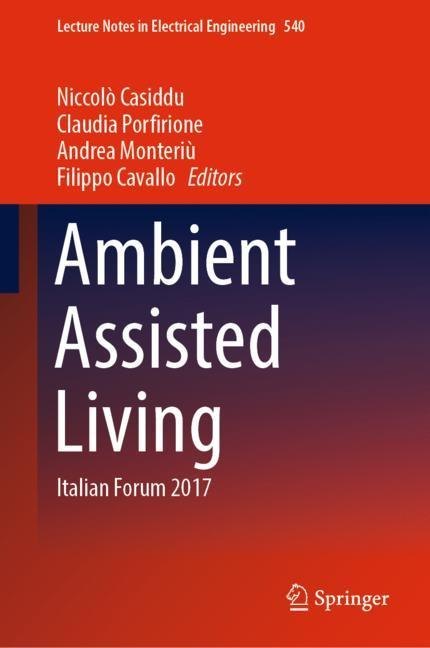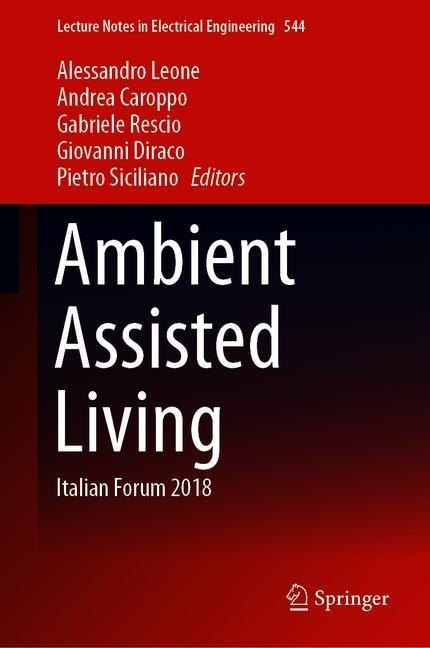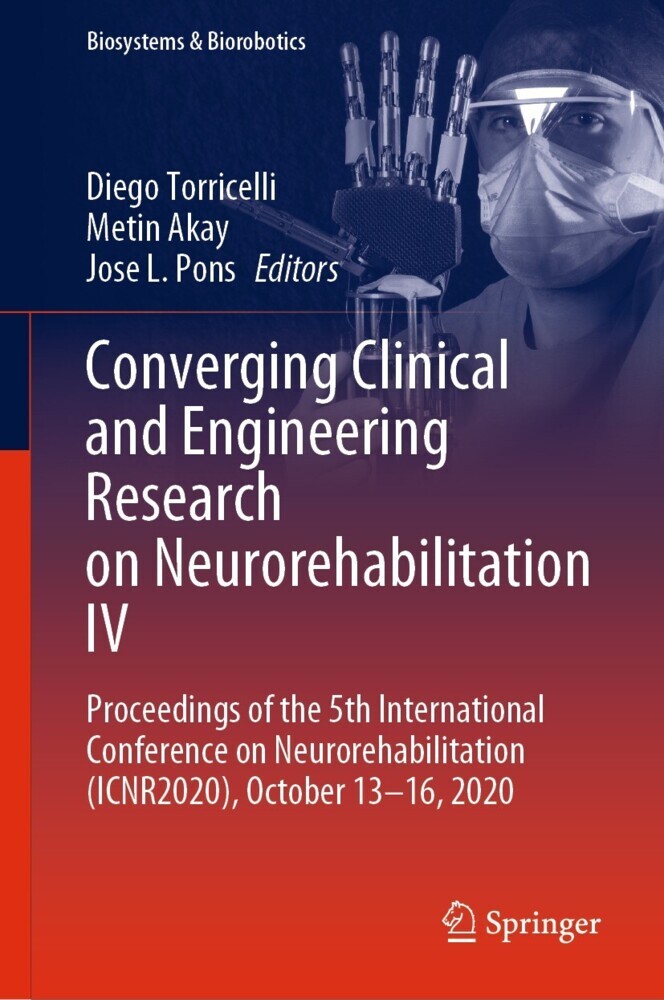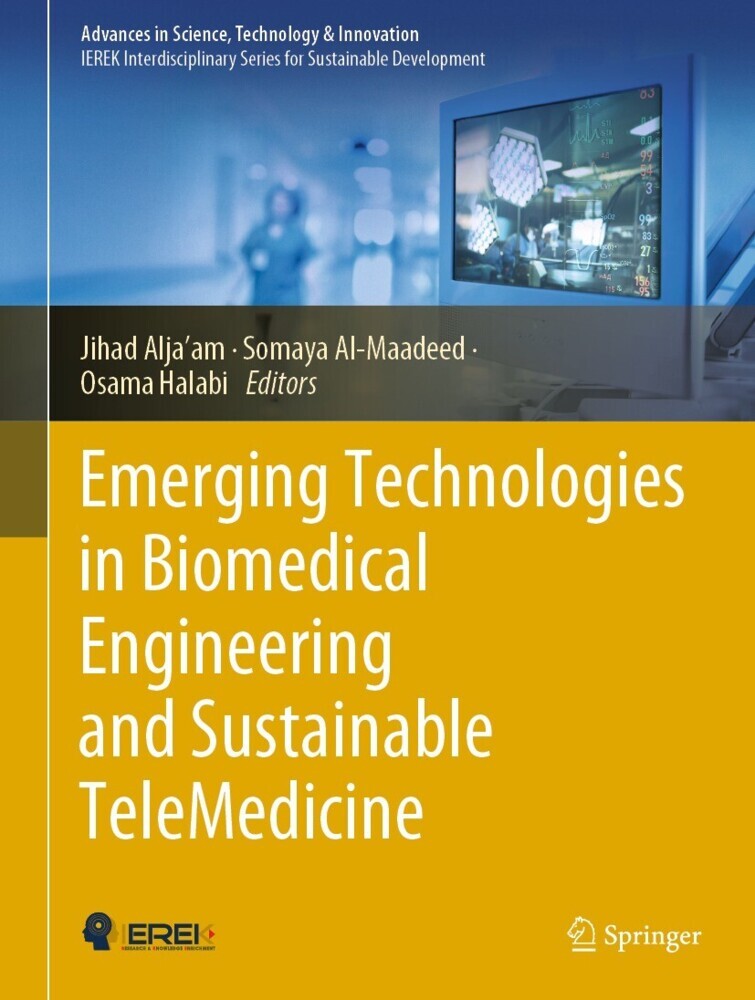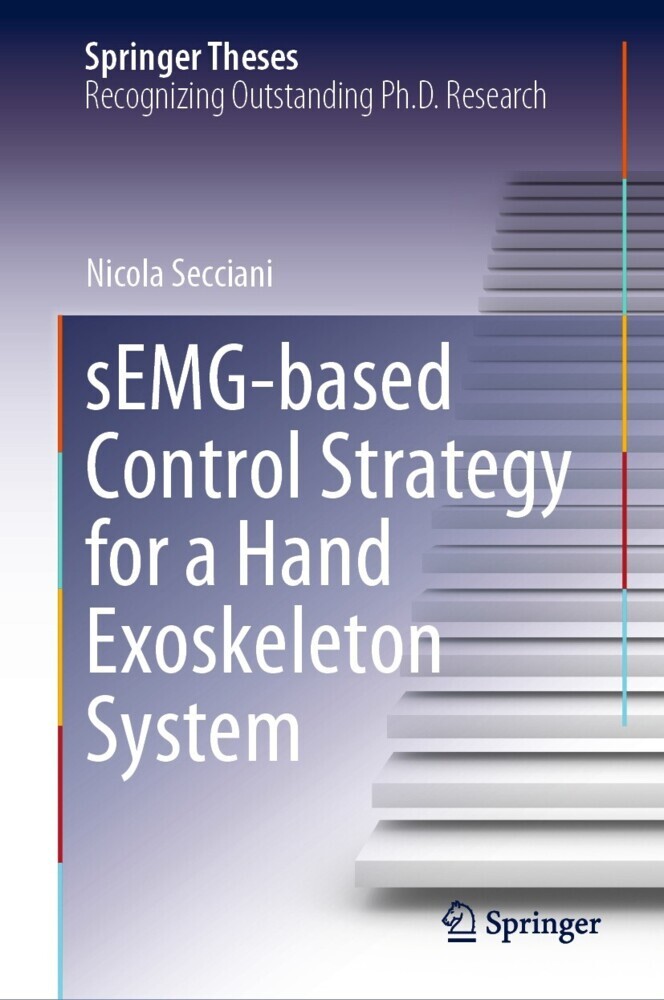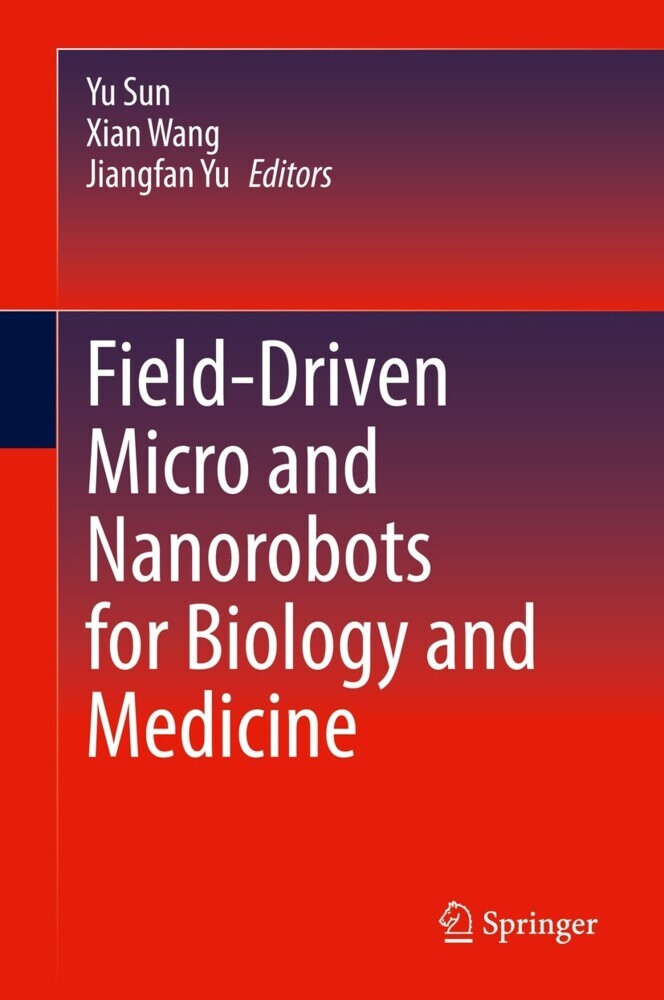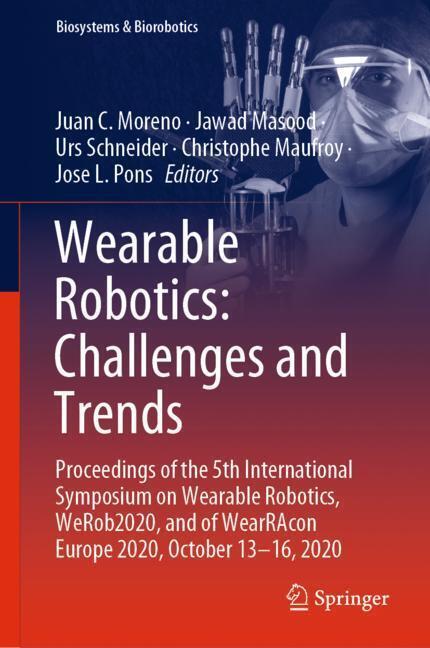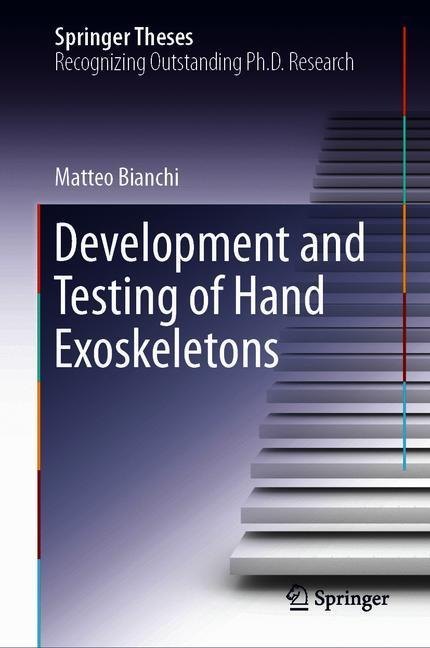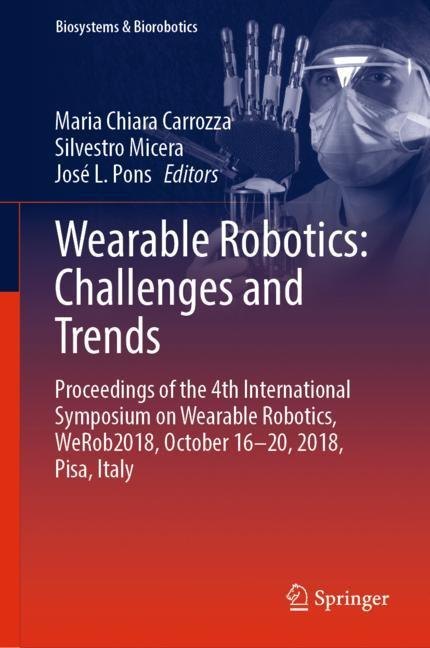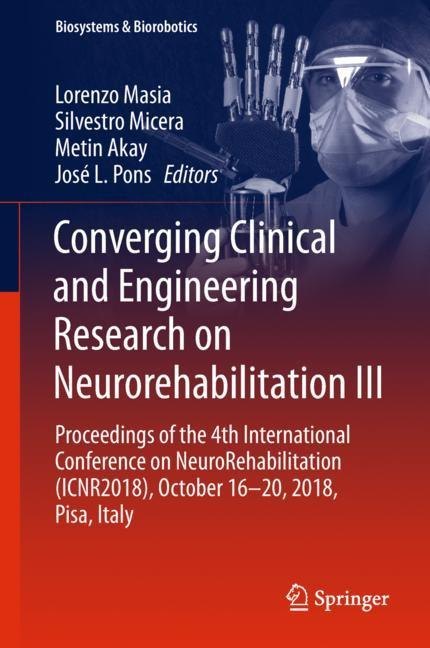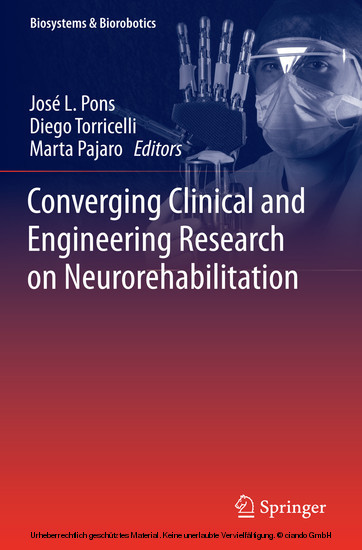Ambient Assisted Living
Italian Forum 2017
This book documents the state of the art in the field of ambient assisted living (AAL), highlighting the impressive potential of novel methodologies and technologies to enhance well-being and promote active ageing. It covers a broad range of topics, with sections on technological sensors and platforms, social robotics for assistance, assistance and care applications, health and medical support methodologies and technologies, as well as the analysis, modelling and design of AAL services.
The book comprises a selection of the best papers presented at the 8th Italian Forum on Ambient Assisted Living (ForitAAL 2017), which was held in Genoa, Italy, in June 2017 and brought together researchers, technology teams and professional associations, as well as representatives of the Italian regions and advisors to the Italian Ministry of Education, University and Research, with the goal of developing a consensus on how to improve provisions for the elderly and impaired. The respective contributions offer valuable insights into how the latest advances can help address the needs of the elderly and those with chronic health conditions. They also underscore the need for AAL to continue moving toward multidisciplinary integration, so as to embrace the various disciplines that place the user of services at the centre of the design process.1;Conference Organization;6 1.1;General Chair;6 1.2;Honorary Chairs;6 1.3;Scientific Committee;6 1.4;Organizing Committee;7 2;Preface;8 3;Contents;10 4;Technological Sensors and Platforms;14 5;Radar Sensing of Vital Signs in Assisted Living Applications;15 5.1;1 Introduction;16 5.2;2 Related Work;17 5.3;3 Materials and Methods;19 5.3.1;3.1 System Overview;19 5.3.2;3.2 Algorithmic Framework for Vital Signs Detection;19 5.3.3;3.3 Experimental Setup;24 5.4;4 Results and Discussion;27 5.5;5 Conclusion;31 5.6;References;32 6;Smart Monitoring of User and Home Environment: The Health@Home Acquisition Framework;35 6.1;1 Introduction;36 6.2;2 Materials and Methods;36 6.2.1;2.1 The Core Framework;37 6.2.2;2.2 Data Storage and Cloud;39 6.2.3;2.3 User Interface;39 6.3;3 Experimental Setup;40 6.3.1;3.1 Data Processing;41 6.4;4 Analysis of Results;44 6.5;5 Conclusions;47 6.6;References;48 7;RESTOQUI: A Platform to Live at Home All Your Life;50 7.1;1 Introduction;51 7.2;2 The Concept;52 7.3;3 Designing Restoqui;56 7.4;4 Discussion;60 7.5;5 Conclusion;60 7.6;References;61 8;Heterogeneous Non Obtrusive Platform to Monitor, Assist and Provide Recommendations to Elders at Home: The MoveCare Platform;63 8.1;1 Introduction;64 8.2;2 MoveCare Platform Overview;65 8.3;3 The Service Layer: Monitoring, Assistance and Activities;66 8.3.1;3.1 Activity Center;66 8.3.2;3.2 Monitoring and Environmental Data;67 8.3.3;3.3 Assistance;69 8.4;4 The Elements of the MoveCare Platform;70 8.4.1;4.1 Virtual Caregiver;70 8.4.2;4.2 A Service Robot;73 8.4.3;4.3 The Community of MoveCare Users;74 8.4.4;4.4 The Monitoring Systems;75 8.5;5 Evaluation;75 8.6;6 Conclusion;76 8.7;References;77 9;Virtual Modeling of the Elderly to Improve Health and Wellbeing Status: Experiences in the Active Ageing at Home Project;80 9.1;1 Introduction;81 9.2;2 Virtual Model;83 9.3;3 An Example of Virtual Model Usage;87 9.4;4 Discussion;90 9.5;5 Conclusions;91 9.6;References;92 10;How to Increase Older Adults' Accessibility to Mobile Technology? The New ECOMODE Camera;93 10.1;1 Older Adults and Mobile Technology;93 10.2;2 The ECOMODE Technology;97 10.3;3 The ECOMODE Interaction Design;98 10.3.1;3.1 A Study with Older Adults;99 10.3.2;3.2 Expert Interviews;100 10.4;4 Conclusions;102 10.5;References;103 11;Assistive Robotics;107 12;Degrees of Empathy: Humans' Empathy Toward Humans, Animals, Robots and Objects;108 12.1;1 Introduction;109 12.2;2 Empathy;109 12.3;3 Empathy Toward Robots, Technologies and Objects;112 12.4;4 Methods;113 12.4.1;4.1 Paticipants;113 12.4.2;4.2 Stimuli;113 12.4.3;4.3 Procedure;114 12.4.4;4.4 Data Handling;115 12.5;5 Results;115 12.6;6 Discussion and Final Remarks;118 12.7;References;119 13;Human-Robot Cooperation via Brain Computer Interface in Assistive Scenario;121 13.1;1 Introduction;122 13.2;2 Methods;124 13.2.1;2.1 Object Selection;125 13.2.2;2.2 Object Recognition;127 13.2.3;2.3 Robot Motion Planning;129 13.3;3 Experimental Trial;130 13.4;4 Results;131 13.4.1;4.1 BCI Classifier Accuracy;132 13.4.2;4.2 Object Recognition Accuracy;132 13.4.3;4.3 Pick and Place Performance;133 13.5;5 Conclusions and Future Works;134 13.6;References;135 14;ACCRA Project: Agile Co-Creation for Robots and Aging;138 14.1;1 Introduction;139 14.2;2 ACCRA Project Overview;141 14.3;3 ACCRA Applications;142 14.4;4 ACCRA Methodology;143 14.4.1;4.1 Step I: Needs Analysis;144 14.4.2;4.2 Step II: Agile Co-Creation;146 14.4.3;4.3 Step III: Experimentation;149 14.5;5 ACCRA Architecture;149 14.6;6 Discussion;151 14.7;7 Conclusion;153 14.8;References;154 15;The CARESSES EU-Japan Project: Making Assistive Robots Culturally Competent;156 15.1;1 Introduction;157 15.2;2 Facets of Cultural Competence;158 15.3;3 The CARESSES Approach;159 15.4;4 Development Methodology;161 15.4.1;4.1 Initial Scenarios;162 15.4.2;4.2 Elicitation of Guidelines;164 15.5;5 Technical Solutions;165 15.5.1;5.1 System Architecture;165 15.5.2;5.2 Cultural Knowledge Base;166 15.5.3;5.3 Culturally-Sensitive Planning and Execution;167
Casiddu, Niccolò
Porfirione, Claudia
Monteriù, Andrea
Cavallo, Filippo
| ISBN | 9783030046729 |
|---|---|
| Artikelnummer | 9783030046729 |
| Medientyp | E-Book - PDF |
| Copyrightjahr | 2019 |
| Verlag | Springer-Verlag |
| Umfang | 361 Seiten |
| Sprache | Englisch |
| Kopierschutz | Digitales Wasserzeichen |

